Abs are the dream of almost every person who strives to develop the aesthetics of their own body. Many effective exercises and training techniques can strengthen and sculpt your abdominal muscles. This article presents all the most effective abdominal exercises, as well as programs and recommendations for beginners and advanced.
The Best Abdominal Exercises
The following exercises allow you to pump up all the abdominal muscles, namely: the rectus, internal and external oblique muscles, as well as the transverse-deep muscle, which is a stabilizer of the lumbar spine.
1. Lying crunches
The exercise allows you to work the rectus ab muscle. To perform crunches, you can use additional weights in the form of dumbbells or weighted disks, and also work with your weight. Before performing the technique, you need to fix your feet. As you exhale, you need to lift your torso completely, lift your spine off the floor, and under no circumstances straighten or bend your back.
As you exhale, slowly return your torso to the floor, keeping your back around as you return.
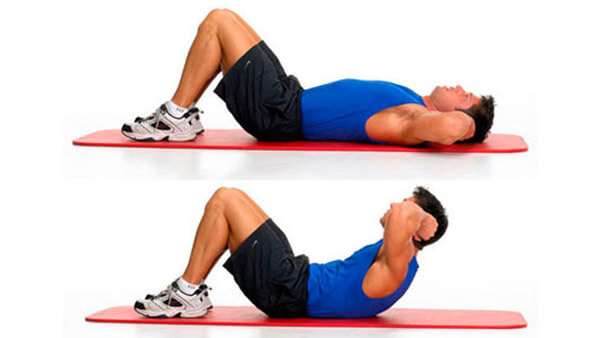
2. Incline sit-ups
This version of crunches is performed on an inclined abdominal bench with leg clamps and develops the rectus ab muscle. You should fix your feet in the simulator and round your back, placing your hands behind your head. You can also use weights. As you inhale, your back should lean back to about 45 degrees, without touching the back of the bench or straightening. With exhalation, the reverse movement is performed.
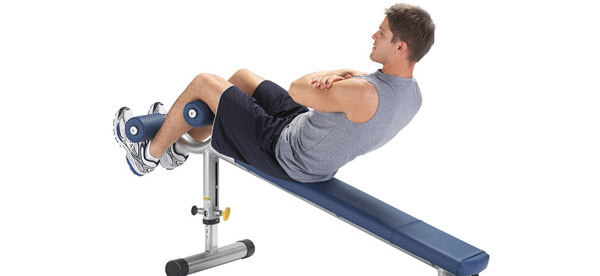
3. Incline leg raises
This is a technically complex exercise that should not be mastered from scratch, as it requires good physical preparation. The load is distributed as concentratedly as possible on both the upper and lower parts of the rectus muscle. When performing leg lifts on a bench, the athlete must take the reverse position and grab the levers for fixing the legs with his hands and completely press the torso against the backrest. In the starting position, the legs are held vertically, but the knees should be slightly bent. Next, as you exhale, push the pelvis up, lifting only your lower back from the bench, then while inhaling, you need to lower your legs down 45 degrees without bending your lower back. And so on: as you exhale, the legs return to a vertical position, and the pelvis is pushed up.
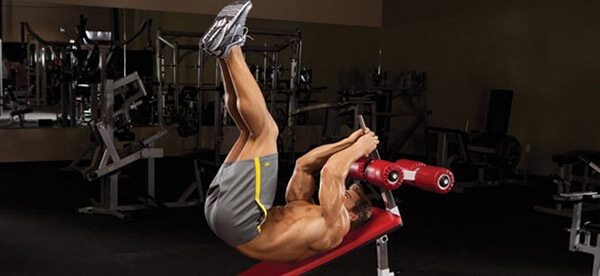
4. Short crunches
With this exercise, you can pump up your abs with an emphasis on the upper part of the rectus muscle. To perform crunches, you need to lie on your back and place your hands behind your head. The feet can be placed on the floor or held vertically. With exhalation, a short movement is performed in which only the shoulder blades come off. As you exhale, the thoracic region returns back.
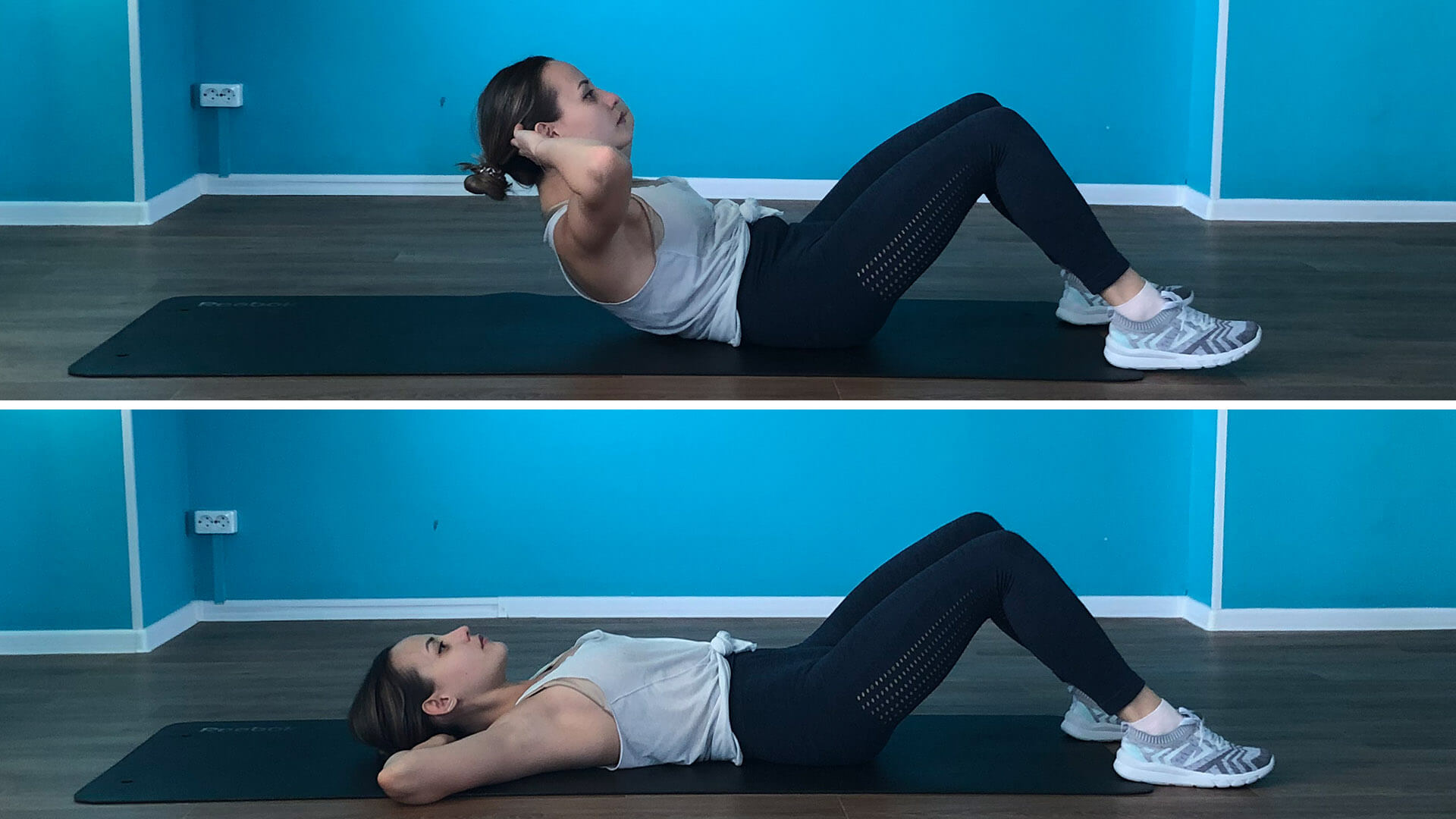
5. Fold
The exercise develops the rectus ab muscle. To perform it, you need to take a lying position, moving your arms back and straightening your legs. As you exhale, you should fold yourself like a book, at the same time pulling your torso towards your hips, while your palms should reach towards your feet. You can also perform the option with bent knees.
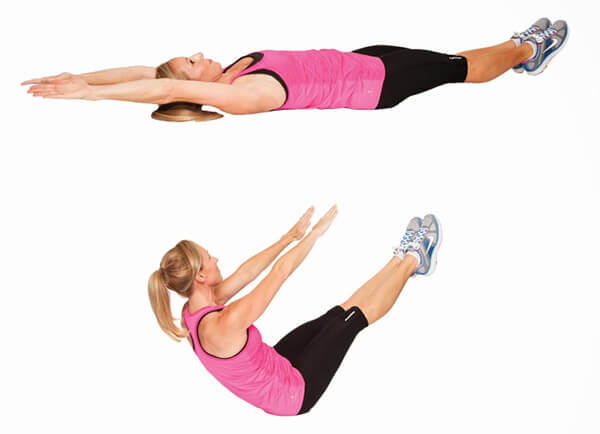
6. Crunches in a block machine
Body crunches are performed in a block simulator and help develop six-pack thickness and strength endurance. The load falls on the rectus muscle. To do this, you need to sit in the simulator, rest your back on the pads of the simulator, and grasp the handles. Feet should be placed on the footrest. With an exhalation, the torso is twisted together with the design of the simulator, aiming the stomach towards the hips, while the back should be round. As you exhale, you should lean back, but without straightening your back.

7. Oblique crunches in a block machine
The lateral crunch machine primarily develops the external oblique abdominal muscles. To perform crunches, you need to sit in the simulator, fix the position of the body and grab the handles, and also place your legs in the movable structure of the simulator, thanks to which the pelvis will be twisted. As you exhale, the knees move to the side using the side surface of the body, and as you inhale, you return to the center. The same is done in the other direction.
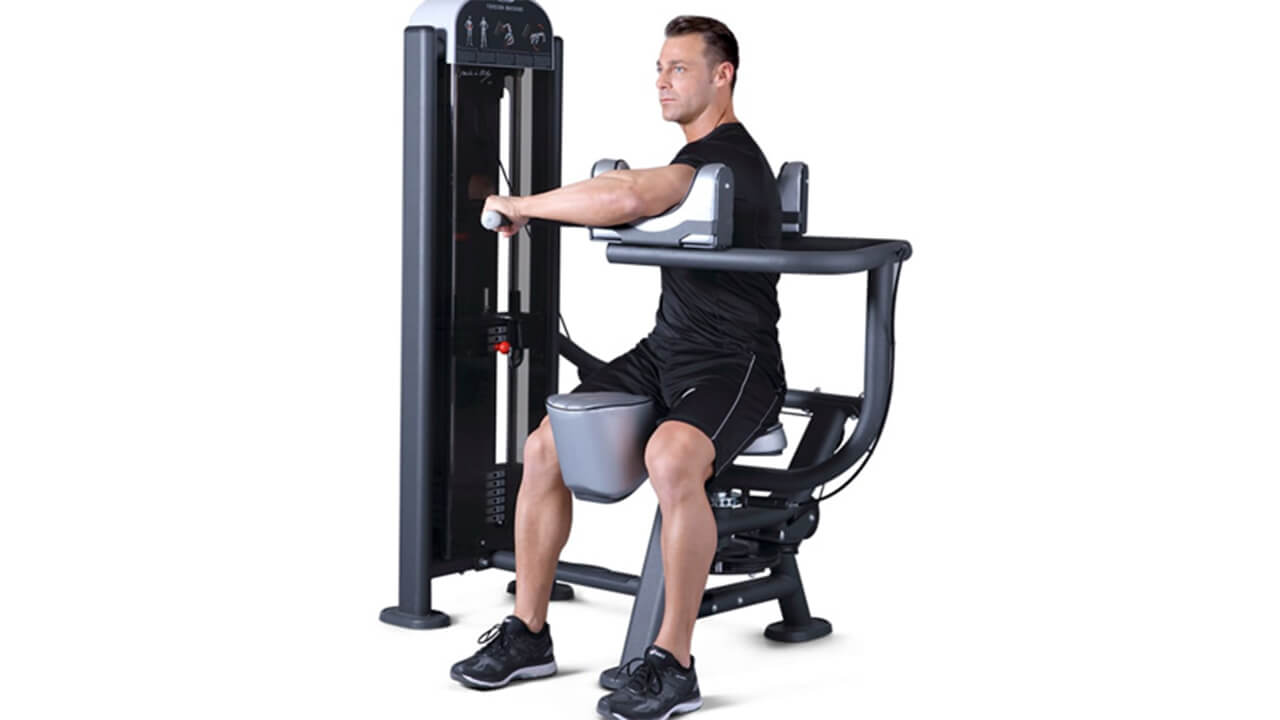
8. Sitap
Situps are the name for torso crunches that became popular thanks to CrossFit. The exercise itself is simple and resembles sit-ups while lying on the floor. In this version, the back is completely lifted off the floor using the rectus ab muscle with the feet touching. In this case, the feet can rest on the floor or against each other, with the knees positioned apart. There are also two more types of sitap: V-step or book step, and incline sitap.

9. Lying leg raises
In this version of the leg raise while lying on the floor, the lower part of the rectus ab receives a greater degree of load. When performing lifts, it is important to monitor your lower back, preventing it from lifting off the floor; to do this, you can place your palms under your buttocks and keep your abs tense. Raising your legs up vertically, as you inhale, lower your feet to the floor, and as you exhale, return them to the starting position. If it is difficult to perform the option, you can lower your legs one at a time or at least 45 degrees relative to the floor.
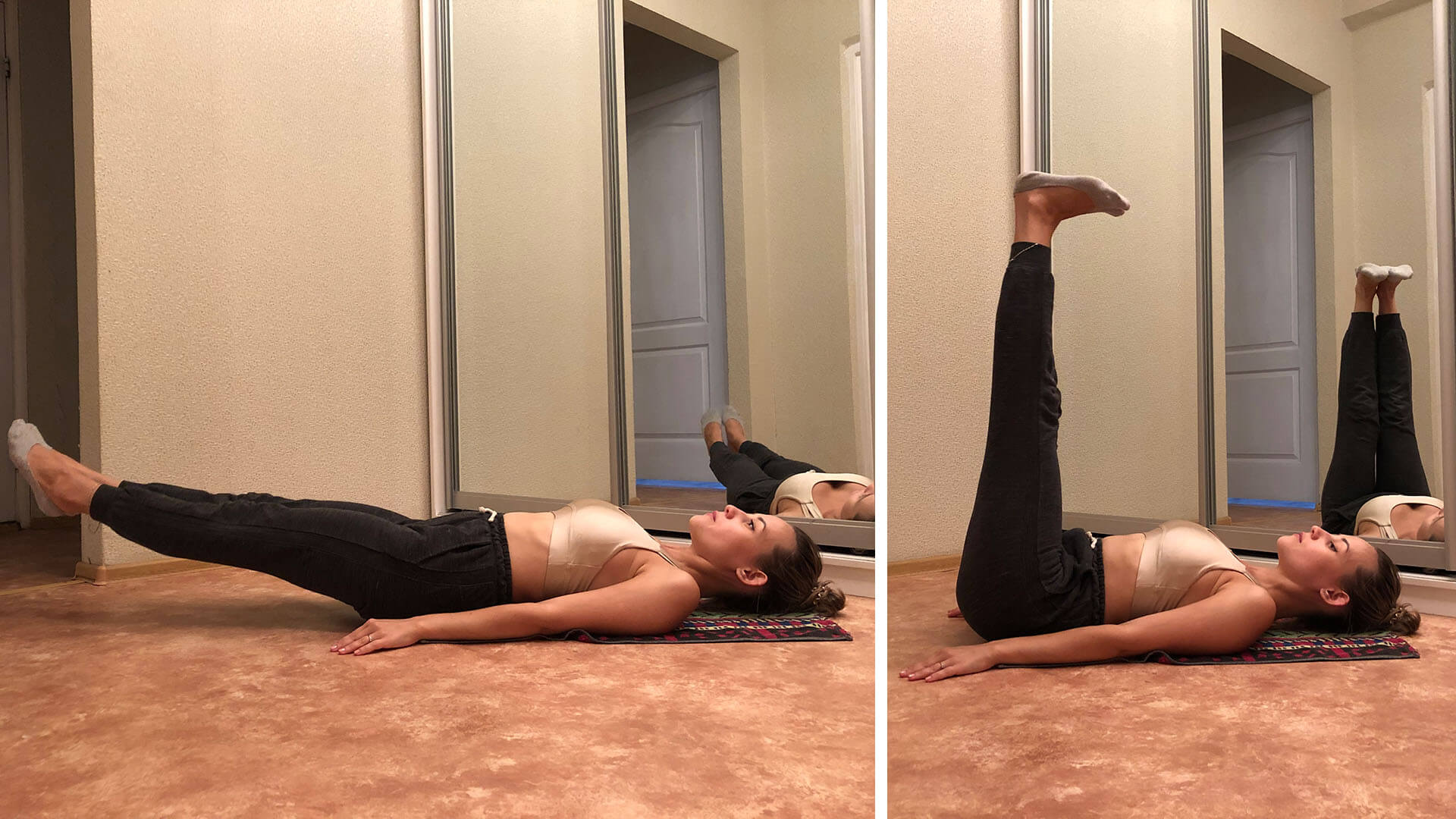
10. Leg raises on parallel bars with straight arms
In this embodiment, the load is evenly distributed throughout the entire rectus ab muscle, but with a slight slope to the lower part. To perform leg lifts, you need to take the starting position on the uneven bars with straight arms, without sagging at the shoulders. Keeping your torso motionless, as you exhale, raise your legs parallel to the floor using your abs, and as you inhale, lower them down.

11. Raising the arm to the opposite leg
In this version, not only the rectus ab muscle works, but also the oblique muscles due to the asymmetrical lifting of the torso. To do this, you need to lie on your back, bending one knee, and stretch your arm and the opposite leg back. With an exhalation, the shoulder blades and straight leg are simultaneously lifted from the floor, at this moment the palm tends to the opposite foot. As you inhale, the athlete returns to the floor. Then the same is done on the other side.

12. Oblique crunches
The main emphasis of the load here falls on the oblique abdominal muscles, concentrating on each side separately. For side twists, you should lie on your back, place one arm behind your head, bend the opposite knee, and place your ankle on the thigh of the supporting leg. The free hand is extended to the side. With an exhalation, the torso twists diagonally, while the elbow tends to the opposite knee. As you inhale, the shoulder blades return to the floor. The same movements are performed on the other side.
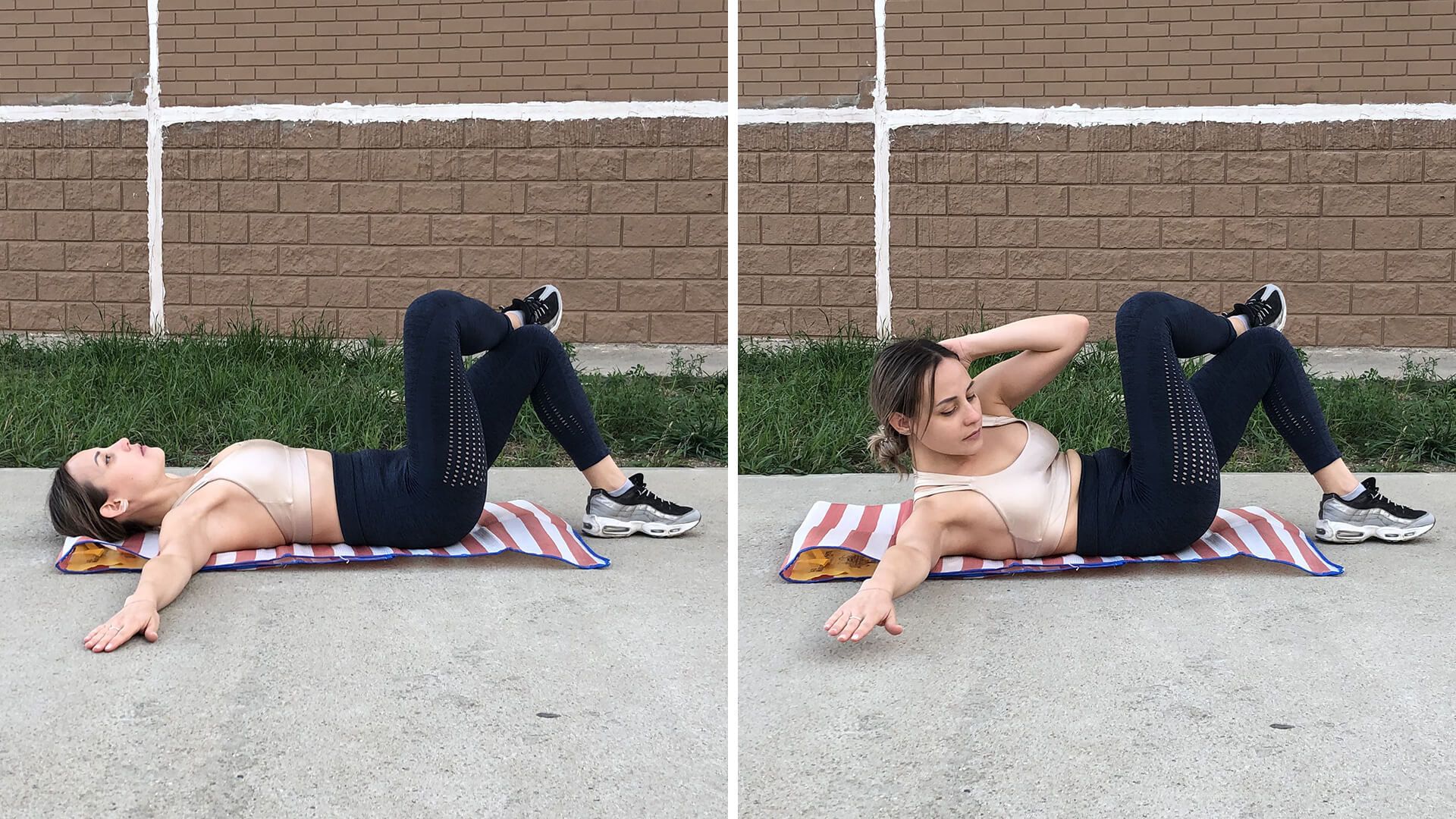
13. Russian crunches
The exercise develops all abdominal muscles, even the deepest ones, by maintaining balance. For crunches, it is advisable to use additional weights, such as a small weight or dumbbells. The body weight should be distributed on the buttocks, the torso should be tilted and the feet should be lifted off the floor, keeping them suspended throughout the approach. As you exhale, twist the torso in one direction, while inhaling, return to the center, and then turn in the other direction – exhaling.

14. Bicycle Twist
Bicycle using side crunches develops the oblique and rectus ab muscles. You need to lie on your back, put your hands behind your head and keep your legs in weight, bent at the knees. With an exhalation, the elbow moves towards the opposite knee, turning the torso diagonally. As you inhale, the athlete returns to the center, and as you exhale, repeats the twist in the opposite direction.
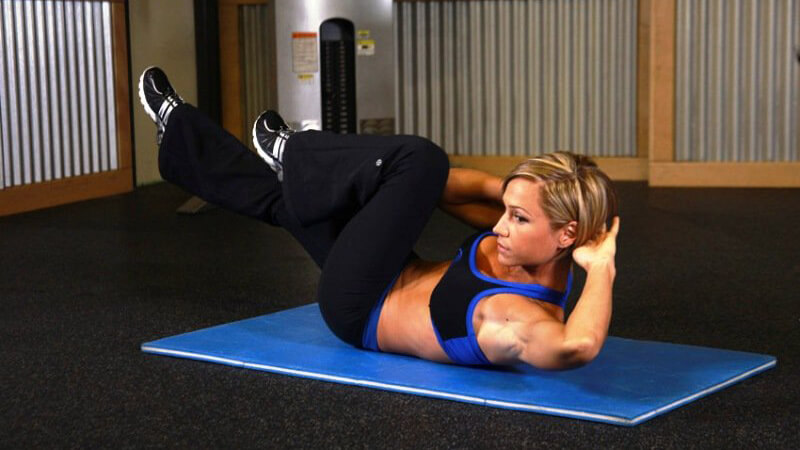
15. Leg raises on the horizontal bar
The exercise develops the rectus ab muscle. You need to hang on the horizontal bar: exhale, lift your legs parallel to the floor, without swaying, and while inhaling, lower your feet down.

There is also an option with your feet touching the crossbar, but for this, you must be in good physical condition. It is performed in a similar way, but at the top point of the movement the feet should touch the crossbar without swinging the body.
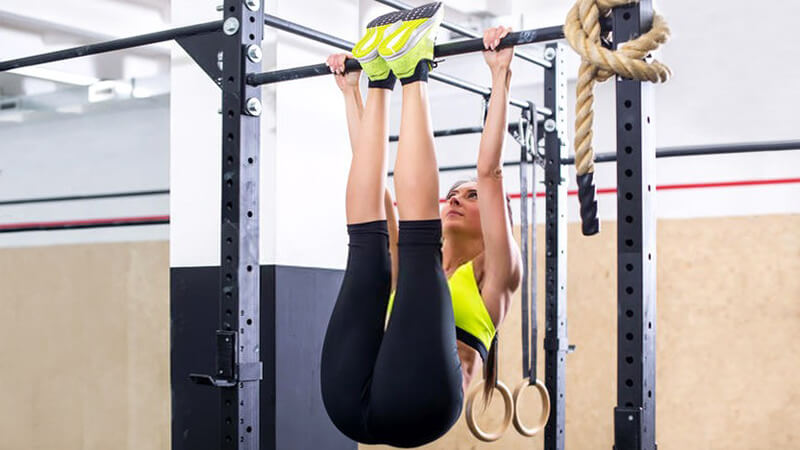
16. Oblique crunches on the bar
Another exercise on the horizontal bar, in which the oblique abdominal muscles are additionally involved in the work. To do this, you need to hang on straight arms and, with an exhalation, raise your legs with bent knees, twisting your pelvis diagonally. Performed alternately on one side and the other.

17. Leg raises on parallel bars, resting on your elbows
To perform this option, the bars must be equipped with special armrests to support the forearms. Performed similarly to straight arm raises. The lower back should be pressed against the back of the machine. As you exhale, lift your straight or bent legs parallel to the floor; as you exhale, your legs return down. The abs remain tense throughout the entire approach, preventing lumbar deflection.
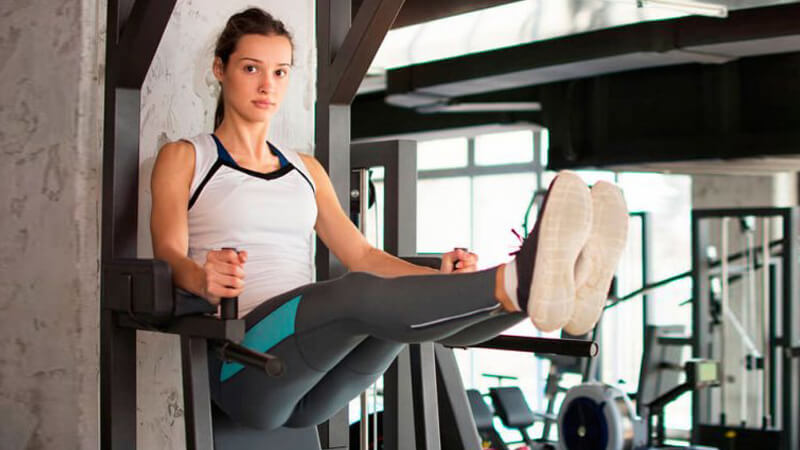
18. Prayer in the crossover
Another exercise for trained athletes. To perform it, you should attach a straight handle or ropes to the upper block of the crossover. The athlete grabs the handles and kneels. With an exhalation, using the abdominal muscles, you twist with a round back, aiming your forehead towards the floor, but without touching. With an exhalation, the torso extends, but not completely, leaving the back round.
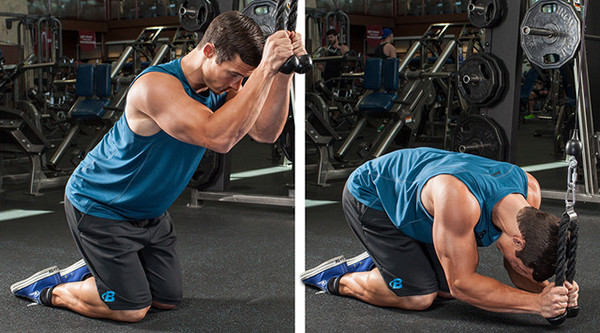
19. Plank
The plank is a universal option for working all the abdominal muscles and more. Can be performed both statically and dynamically. Whichever plank option you choose, there is one important condition – maintaining a straight line throughout your entire body. When performing the plank correctly, the pelvis and lower back should not sag above the floor; the abs should always be statically tense throughout the entire approach.

20. Side bends of the body
The exercise is performed to isolatedly work the oblique abdominal muscles. Bends can be performed both with a dumbbell and in a crossover, holding the handle of the lower block in the palm of your hand. As you exhale, with your legs spread wide apart, bend to the side behind the weight without twisting your torso or pelvis. It is important to feel the extension of the side of the body. As you inhale, you should return to the center with a slightly faster movement. The same bends are performed on the other side.
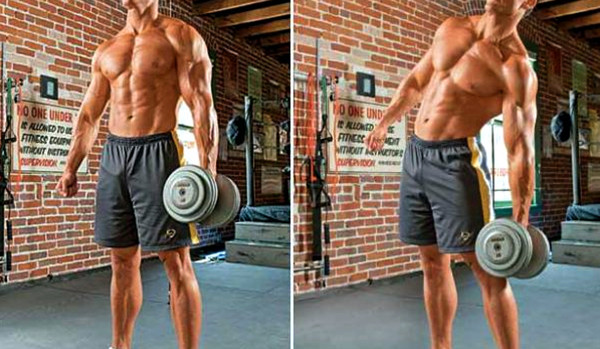
Tips: how to pump up your abs
- The abdominal complex should not consist of a large number of exercises. Depending on your physical fitness, 2-4 exercises are enough to work all areas of the abs.
- You can train your abs often – 3-4 times a week, but not every day. Although the abdominal muscles recover quickly, to grow, they still need time to rest, which should last at least 1-2 days.
- Abdominal exercises should be combined with other muscle groups and performed at the end of the workout.
- In order to lose weight, you should perform each exercise at least 15 repetitions in 3-4 sets.
- To grow and thicken your abdominal muscles, you need to perform weight-bearing exercises for 10-12 repetitions. It is better to train with weights when the abs have already been prepared using simple techniques for at least a month.
Scheme of the abdominal training program
Regardless of the muscles being trained, abdominal exercises are performed at the end of the workout. Therefore, only options for the abdominal muscles will be presented in the complex.
Day 1 – focusing on the upper rectus muscle
- Raising the torso on an inclined bench.
- Fold.
- Short body lifts.
Day 2 – focusing on the lower abs
- Leg raises on parallel bars.
- Incline leg raises.
- Lifting legs alternately while lying on the floor.
Day 3 – focusing on the obliques
- Lateral crunches in a block machine.
- Lying oblique crunches.
- Bicycle twist.

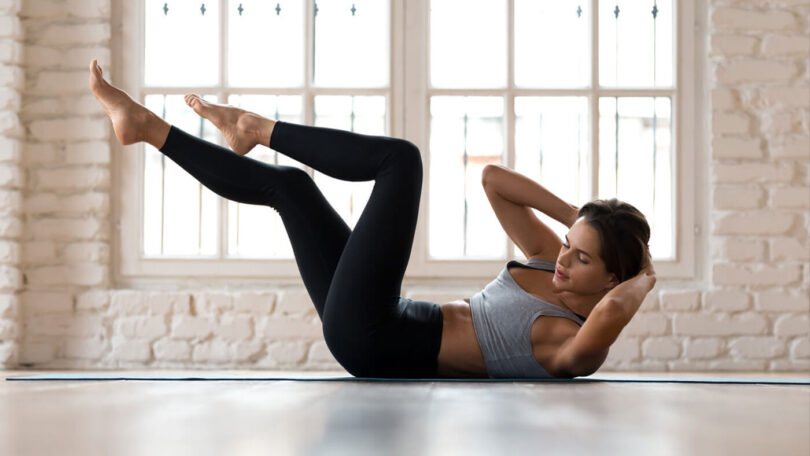
Leave a Comment